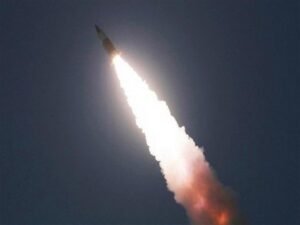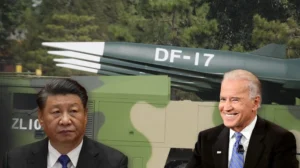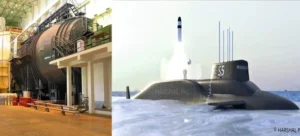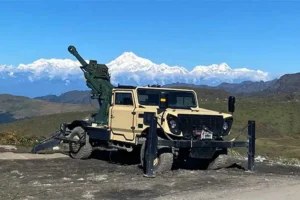Source : The Indian Express

How India’s new naval base at Andamans will force Beijing to reassess its strategy
By Raja Menon
In a bold, imaginative and strategic move, the government of India has quietly begun to build a holistic naval base on Great Nicobar Island, which stands squarely overlooking the entrance to the Malacca Straits, and is barely 90 miles from the tip of Indonesia. This step, in terms of chess terminology, is like moving the queen out into the open to give the opposing king a direct check. For instance, it immediately threatens to bring the shutter down on China’s extended neck stretching far out into the Indian Ocean, far westward to Djibouti and Gwadar. A naval base in Great Nicobar would be the central piece to an oceanic strategy, to offer a counter punch to Chinese aggression in the Himalayas.
Deeply vulnerable in its dependence on imported oil, China’s Indian Ocean lines of communications imports over 65 per cent of its oil dependency. One would think that with such a deep vulnerability, Beijing would tread cautiously on the Himalayan LAC. But, so far, it has firmly believed that New Delhi is totally and deeply mired in a short-sighted land-centric strategy ignoring the advantages conferred on India by its maritime geography.
The tactical scenario in the Malacca Straits and South China Sea is already dominated by the intelligence sharing and communications agreements of the Quad. In times of crisis, these agreements would be activated and India would be the beneficiary of the entire tactical picture in the Indian Ocean and South China Sea. An aggressive Chinese move on the northern LAC would be countered by a threat to China-bound tankers in the Malacca Straits.
Operating from the new base in Great Nicobar, Indian fighter aircraft directed by own air early warning aircraft would clamp down information dominance over the Malacca Straits. A PLA attempt to send a task force to investigate the tanker stoppage would walk straight into the trap of a geographically constructed “killing ground” dominated by Indian aircraft and missile-armed ships and submarines.
Hopefully, it won’t come to that because Beijing as well as Delhi can make their own tactical calculations.
All this, of course, depends on whether New Delhi is prepared to see the game through, and permit the new base in Great Nicobar to be the beginning of an oceanic strategy to replace the tired land-centric approach where India face impossible geographical obstacles. It also depends on whether the political intention is merely to set up a minor reconnaissance base in great Nicobar or a full-fledged Pearl Harbour that will be the Indian outpost of the to-be-set-up eastern theatre command, which is strong enough to deter the Chinese risking escalation with India. The strategy that is being recommended is in accordance with the current revolution in military affairs, where the prerequisite to victory is in formation dominance and the denial of information to the enemy. With a base in Great Nicobar, the entry to the Malacca Straits would be a hundred miles away while the nearest Chinese base in Sanya would be 1,500 miles away.
It is rumoured that the Chinese have awarded a major dredging contract off Gwadar and that their intention is to operate an aircraft carrier in support of Djibouti and base it in Gwadar. With access to the Malacca Straits in Indian hands, these deep laid plans would blow away in the wind. A Sino-Indian conflict scenario suddenly looks catastrophic for Beijing. Of course India’s total strategy would have to be played skillfully, coordinating between the armed forces and the diplomats to keep the threshold as low as possible.
This daring move by New Delhi illustrates once again that the strategic rules governing war have not changed over the years. Alexander the Great never fought on ground not of his choosing, nor did Napoleon and the great captains of war. At sea, choosing the area to fight essentially means creating a dominant battlespace where our information dominance prevails and the enemy is blinded. Under such conditions, the odds of numbers on the Chinese side are not a relevant factor as the Ukraine war has once again demonstrated.
In Ukraine, the local satellite information is made available right down to the platoon commanders level, on the cell phone via US satellite internet.
This author authored a paper in September 2021 — “Reorienting the Military Grand Strategy: From Defensive Territoriality to an Offensive Oceanic Strategy” — which was circulated within the government. This paper calls for abandoning the two-front war scenario, downsizing the army and counter-punching the Chinese on the seas, thereby denying Beijing a fight on ground of its own choosing. With an Indian tri-service base sitting on the Chinese line of communications, their outposts in the Indian Ocean will wither on the vine.
All this is not to suggest going to war with China, in fact, just the reverse. In the transactions between the two countries there is fear, currently, on the Indian side, that Delhi is dealing with a country that can overwhelm India, should it choose to do so. It is not an unfounded fear, but one based on tactical calculation. This calculation will now change. The downstream effect will be seen in the coming years when China begins to treat India as an equal, because again, tactical calculation will make the truth obvious in Beijing.
The writer, a former rear admiral in the navy, is author of A Nuclear Strategy for India








